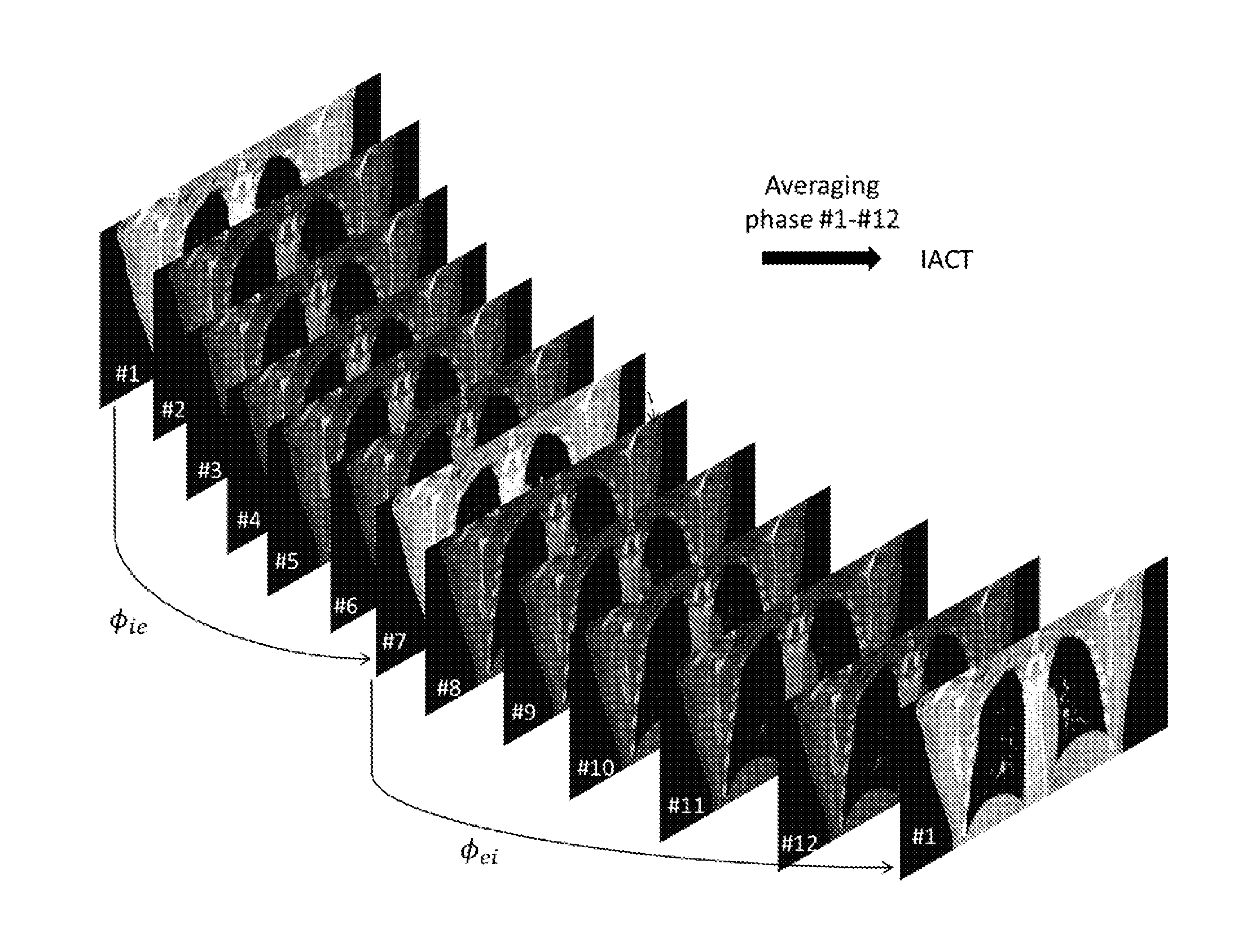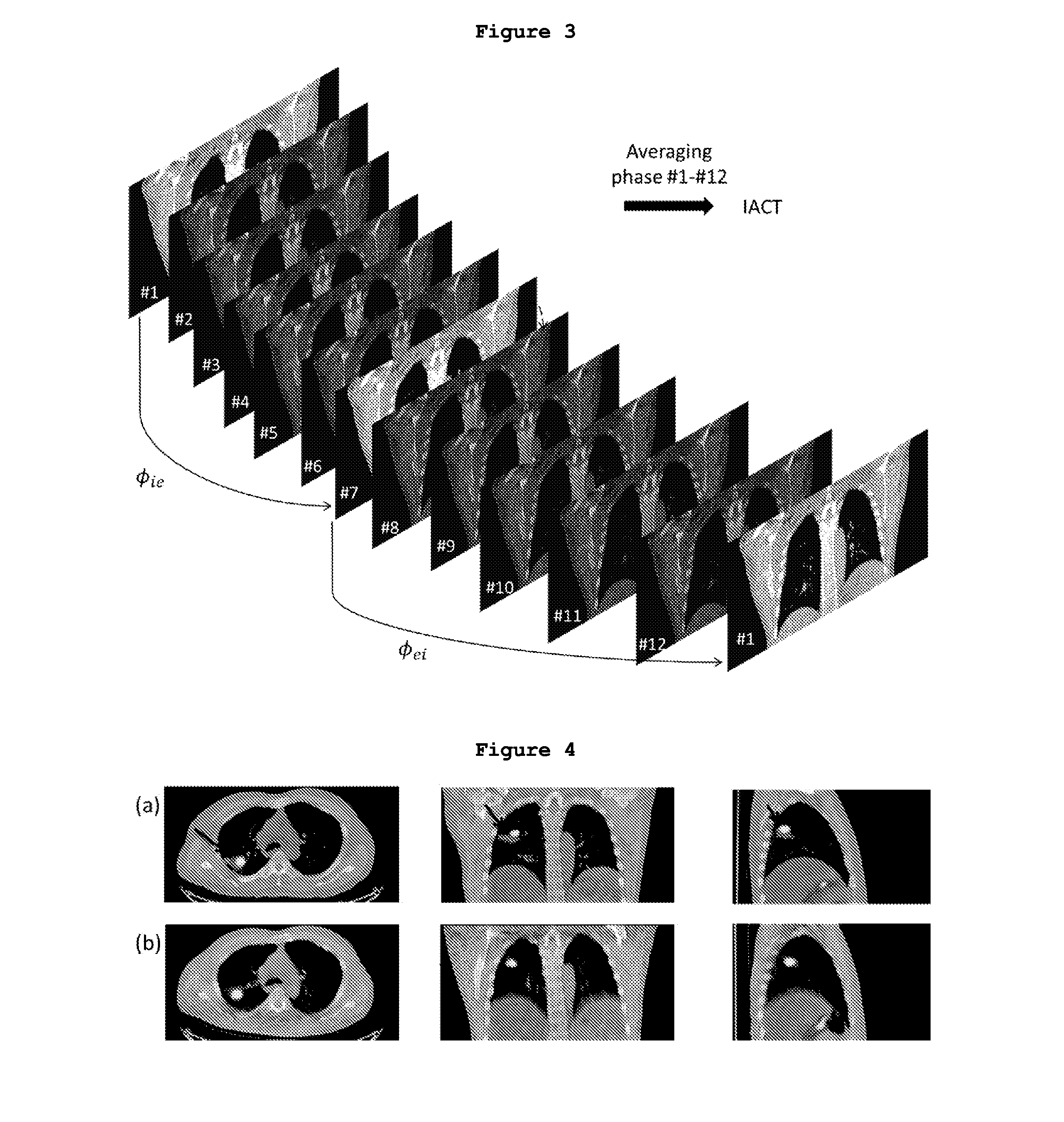System and method for attenuation correction in emission computed tomography
a computed tomography and emission correction technology, applied in tomography, instruments, applications, etc., can solve the problems of significant diagnostic error, hampered image quality of emission computed tomography system such as combined pet/ct or spect/ct, and respiratory misalignmen
- Summary
- Abstract
- Description
- Claims
- Application Information
AI Technical Summary
Benefits of technology
Problems solved by technology
Method used
Image
Examples
example 1
Active Breathing Controller (ABC) Design
[0097]The ABC used in this example integrates a spirometer, an air mask / mouth piece, and a tube-valve system as shown in FIG. 1. Patients were asked to perform mouth-breathing using the air mask or mouth piece that is connected to the tube. The flow sensor inserted in the tube detected real-time breathing flow rate of the patients and sampled the signal to the microcontroller, which further preprocessed the signal and sent it to a computer through a USB connector. An acquisition program based on C++ was developed to process the input signal and control the switching of the valve in the tube. The program can detect the change of the air flow direction according to the flow rate measurement to locate the end-inspiration and end-expiration phases, while the trigger circuit can then automatically control the closing of the valve located in the end of tube to suspend the patients' breathing. Hence, the operator only needs to notify the program when...
example 2
Clinical Setup
[0118]In this Example, two normal volunteers were recruited and images were acquired using a PET / CT scanner (Discovery VCT, GE Medical Systems, Milwaukee, Wis., USA). The patients were injected with 328 MBq and 406 MBq of 18F-FDG respectively and scanned 1 hour post injection. Thoracic PET data were acquired for 2 bed positions with 3 minutes per bed position. One standard helical CT (HCT), two extra end-inspiration and end-expiration breath-hold helical CTs were obtained using ABC for IACT were performed for each subject (FIG. 8). The standard HCT acquisition settings were: 120 kV, smart mA (range 30-150 mA) helical mode, 0.984:1 pitch, 0.5 s gantry rotation and total 4.4 s scan time. For IACT, two breath hold CTs were acquired at 120 kV, 10 mA helical modes, 0.984:1 pitch, 0.5 s gantry rotation time and a total of 4.4 s acquisition time for each scan.
IACT Generation
[0119]B-spline, a deformable image registration algorithm, was applied to calculate the deformation vec...
example 3
[0126]In this example, 4D Extended Cardiac Torso (XCAT) Phantom is used for realistically model the anatomy, activity distribution of a patient injected with 18F-FDG, and the respiratory motions. An analytical projector and OS-EM reconstruction algorithm provided by STIR (Software for Tomographic Image Reconstruction) was used for modelling a GE Discovery STE PET Scanner. The respiratory cycle was divided into 13 phases starting from the end-inspiration phase, and two maximum respiratory motion amplitudes of 2 cm and 3 cm were modeled. The attenuation maps representing CACT, IACT, HCTin and HCTex are shown in FIG. 11 (a) to (d). Thoracic spherical lesions having diameters of 10 mm and 20 mm are placed at 4 different locations individually at lower left lung, lower right lung, middle right lung and upper right lung as shown in FIG. 12 (a) to (d). The target-to-background ratios (TBR) of 4:1 and 8:1 was used for respiratory amplitude of 2 cm while the TBR of 6:1 and 12:1 was used for ...
PUM
 Login to View More
Login to View More Abstract
Description
Claims
Application Information
 Login to View More
Login to View More - R&D
- Intellectual Property
- Life Sciences
- Materials
- Tech Scout
- Unparalleled Data Quality
- Higher Quality Content
- 60% Fewer Hallucinations
Browse by: Latest US Patents, China's latest patents, Technical Efficacy Thesaurus, Application Domain, Technology Topic, Popular Technical Reports.
© 2025 PatSnap. All rights reserved.Legal|Privacy policy|Modern Slavery Act Transparency Statement|Sitemap|About US| Contact US: help@patsnap.com



